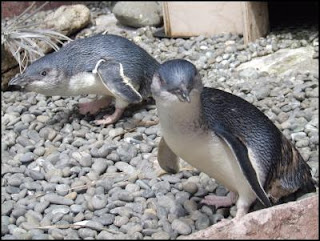NEW ZEALAND -
Wellington Zoo's veterinary team were able to release a nationally endangered
Fiordland crested penguin back into its wild West Coast habitat, after successful treatment at
The Nest Te Kōhanga.
The female Fiordland crested penguin (Tawaki in Maori) arrived at Wellington Zoo in September with an infected wound from a predator bite, but recovered well after receiving treatment from the expert veterinary team.
“This Tawaki has responded really well to treatment during its stay at The Nest Te Kōhanga,” said Dr Lisa Argilla, Veterinary Sciences Manager.
“We cleaned and stitched up the wound, which due to the infection and pain meant she was unable to swim and hunt in the wild. After treatment, she has steadily gained weight, been eating well, and displayed excellent physical fitness and waterproofing after spending time in the salt water pool.”
The bird flew south on Monday along with Wellington Zoo Vet Nurse Angelina Martelli, who provided care along the journey. The penguin was released in the evening near the site she had been found in Hokitika, with support from
Department of Conservation (DOC) and local rehabilitation volunteers who had found and cared for her initially.
“This Tawaki was found in need of the specialist veterinary treatment and pre-release care that the team at Wellington Zoo is able to provide,” said Antje Wahlberg, DOC Ranger.
“We’re delighted to help this endangered bird, whose story helps people connect to Tawaki, and support conservation work as a result.”
“Caring for these precious endemic birds is a special opportunity, and a great example of the collaborative nature of conservation agencies,” said Dr Argilla.
“Wellington Zoo has strong relationships with DOC and the local rehabilitation volunteers as well as with the
West Coast Penguin Trust, which highlights the importance of conservation organisations working together to save animals in the wild.”
Source
Wellington Zoo releases endangered Tawaki into the wild [press release], 19 November 2015, Wellington Zoo















